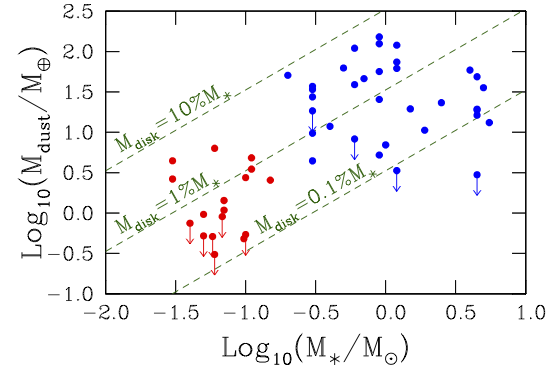 |
The sensitivity, resolution and the wavelength coverage of ALMA makes it an ideal tool for studying the properties of the cold outer disks of young stars and low mass objects. Such observations can aid us in understanding the formation of their central objects and their likelihood of ultimately hosting planets. In a recent Astronomy & Astrophysics paper, Dr. Testi and his collaborators made use of ALMA Band 7 to observe an unbiased sample of spectroscopically confirmed Ophiuchus brown dwarfs with infrared excesses. Eleven of the 17 brown dwarfs are detected at 890 microns, with derived dust masses in the range of 0.5 - 6 Earth masses. With such low masses, it is unlikely that planets can form around these low mass objects. Further, the authors measure the profile of the two brightest disks in their sample and show both to have a sharp disk edge at 20-30 AU; the remainder of the dwarfs have disk sizes less than 20 AU. The small measured disk sizes relative to both brown dwarfs in Taurus and to the more massive Ophiuchus T Tauri stars, combined with the apparent deficit in the disk-to-central object mass ratios in these brown dwarfs relative to T Tauris, are suggestive of environmental effects within Ophiuchus which truncate the disks of their brown dwarfs. |
| Fig. 1: A plot of dust mass vs. central object mass for the sample of brown dwarfs and T Tauri stars in Ophiuchus. The dashed lines show the disk dust mass as a percentage of central object mass. Note that the dust masses for the brown dwarfs are low (< 10 earth masses), and that there are very few brown dwarfs with disk dust masses greater than 1% of the central object mass. |

